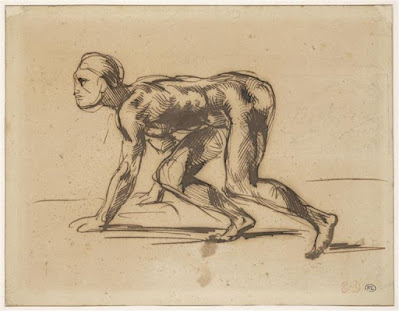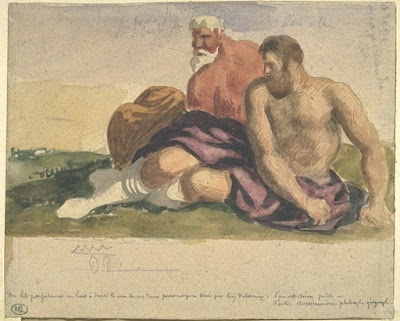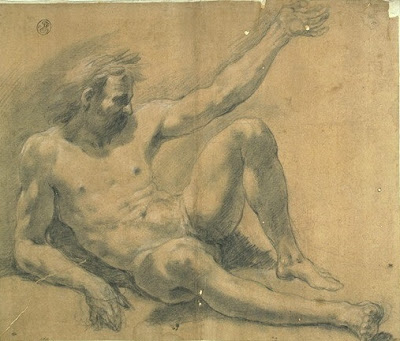 |
| Eugène Delacroix Animal Skulls ca. 1820 drawing Musée du Louvre |
 |
| Eugène Delacroix Académie ca. 1850 drawing Musée du Louvre |
 |
| Eugène Delacroix Cloud Study before 1863 watercolor (formerly owned by Edgar Degas) Musée du Louvre |
 |
| Eugène Delacroix Conversion of St Paul in Pendentive ca. 1840 drawing, with watercolor (study for wall painting, Palais Bourbon, Paris) Musée du Louvre |
 |
| Eugène Delacroix Bouquet of Flowers 1849 watercolor, gouache, pastel (formerly owned by Paul Cézanne) Musée du Louvre |
 |
| Eugène Delacroix after Francesco Primaticcio Arion and Anaximander ca. 1840 drawing, with watercolor (study of fresco at Fontainebleau) Musée du Louvre |
 |
| Eugène Delacroix Cromwell before the Corpse of Charles I (disregarding the fact that Charles was beheaded) ca. 1824-27 watercolor Musée du Louvre |
 |
| Eugène Delacroix Figure bound by the Wrists ca. 1843 drawing Musée du Louvre |
 |
| Eugène Delacroix Figure Study before 1863 drawing, with watercolor Musée du Louvre |
 |
| Eugène Delacroix Hamlet and Gertrude ca. 1824-29 drawing Musée du Louvre |
 |
| Eugène Delacroix Sheet of Studies 1857 drawing Musée du Louvre |
 |
| Eugène Delacroix Skull and Irises ca. 1820 drawing, with watercolor Musée du Louvre |
 |
| Eugène Delacroix Studies for Demon subdued by St Michael ca. 1857-61 drawing (study for fresco in the church of Saint Sulpice, Paris) Musée du Louvre |
 |
| Eugène Delacroix Triton supporting Winged Genius ca. 1860 drawing Musée du Louvre |
 |
| Eugène Delacroix Study of Torso ca. 1840 drawing Musée du Louvre |
"Up to the present, Eugène Delacroix has met with injustice. Criticism, for him, has been bitter and ignorant; with one or two noble exceptions, even the praises of his admirers must often have seemed offensive to him. Generally speaking, and for most people, to mention Eugène Delacroix is to throw into their minds goodness knows what vague ideas of ill-directed fire, of turbulence, of hazardous inspiration, of chaos, even; and for those gentlemen who form the majority of the public, pure chance, that loyal and obliging servant of genius, plays an important part in his happiest compositions. . . . This intervention of chance in the business of Delacroix's painting is all the more improbable since he is one of those rare beings who remain original after having drunk deep of all the true wells, and whose indomitable individuality has borne and shaken off the yokes of all the great masters in turn."
– from The Salon of 1846, published in Art in Paris, 1845-1862: Salons and Exhibitions reviewed by Charles Baudelaire, translated and edited by Jonathan Mayne (London: Phaidon Press, 1965)












































